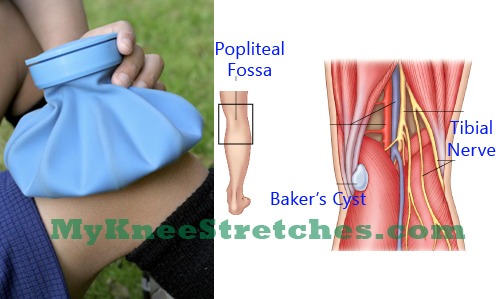Taking care of health is a must and taking care of the Baker’s cyst once it’s occurred is something very important.Once this condition occurs there will swelling of fluid at the back of the knee. It can be a painful condition therefore baker’s cyst treatment is needed.
What is a Baker’s Cyst?
Baker’s cyst or (Popliteal cyst) is known as the swelling caused by fluid that come out from the knee joint that is protruding at the back. It will occur at the back of knee and that’s how it gains its other name. This condition is considered to be common and baker’s cyst treatment is also available.
What Causes Baker’s Cyst?
Baker’s cyst will happen when the fluid in knee joint is being compressed by the body weight. The fluid is trapped and forms a cyst. The fluid creates swelling behind knee (Pain behind the Knee Explanation). The causes of why the fluid is trapped are varied depending on every individual’s condition.
There are several conditions which can cause baker’s cyst. In children, this condition often involves a small sac of fluid called bursa. This sac may join with synovial sac and form a cyst. Synovial sac is known as the cushions of knee bones.
In adults, baker’s cyst is usually caused by arthritis but knee injuries may also cause the cyst. The swelling from arthritis or the injuries will build up in the knee and sooner or later, fluid will be pushed out and cyst is formed and the bulge can be seen clearly. When the bulge can be seen clearly, everyone will know that they need proper baker’s cyst treatment. Recurrence of baker’s cyst may happen when a baker’s cyst is caused by the chronic arthritis.
What are the Symptoms?
Baker’s cyst is a condition that can come without any symptoms. However, this condition is often being associated with the stiffness or tightness behind knee or knee pain. This is especially seen in knees those are extended or the fully flexed knees. The bulge of baker’s cyst will be clearly seen behind the knee. The bulge is usually tender and soft.
The bulge may get ruptured and become complicated because the fluid will spread down. It will cause painless bruise and may cause rapid-onset swelling in leg and it can even mimic the phlebitis in leg. If baker’s cyst is not going even after treatment there might be pain felt. When this happens, then advanced baker’s cyst treatment is needed.
How is a Baker’s Cyst Diagnosed?
Before proceeding to baker’s cyst treatment, a proper diagnosis is needed. In baker’s cyst cases, there will be a need to visit the doctor. So, when a bulge occurs and there is tightness or pain in knee, visit the doctor immediately. There are several tests that will be done in order to make sure that the bulge is indeed caused by baker’s cyst. Injection of the contrast dye followed by Arthrogram knee, Ultrasound or MRI might be conducted in order to make sure about the condition felt by every patient.

Baker’s Cyst Picture
Treatment of Baker’s Cyst
This condition might go away all by itself without any proper baker’s cyst treatment. However, a treatment might be needed if the condition is caused by arthritis or other causes. The treatment is done to get rid of baker’s cyst along with the swelling and the pain. If the baker’s cyst does not seem to go away and becomes really painful, doctor will drain the fluid and give steroid medicine that will help in reducing inflammation caused by the cyst. In rarer case, surgery will be needed.
The necessary baker’s cyst treatment options are as the followings:
- Ice or cryotherapy can be done to reduce pain or swelling in knee caused by baker’s cyst. An ice pack made of ice cubes and towels or the frozen peas can be used in this baker’s cyst treatment.
- Stretching exercises will be necessary to strengthen the muscles around knees.
- NSAIDs (aspirin, ibuprofen and naproxen) or the non-steroidal anti-inflammatory drugs will be useful to relieve pain as well as limit swelling and inflammation. Various brands of these drugs such as ibuprofen are available without prescription.
- Physical therapy is done by moving the knee that helps the muscles around knee to get stronger.
- Surgery is the last option that will be done only when the condition is considered as severe and need an immediate action to free the patient from pain.
A baker’s cyst treatment with medicines or pain relievers is also necessary when baker’s cyst is ruptured. The treatment will be mostly about relieving the pain felt until all fluid is completely reabsorbed by the body.


